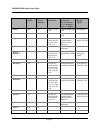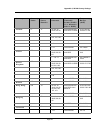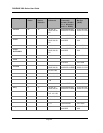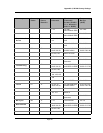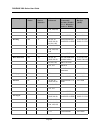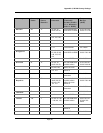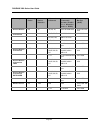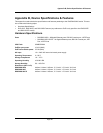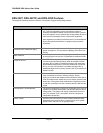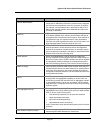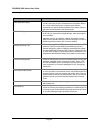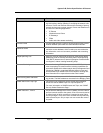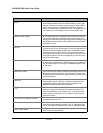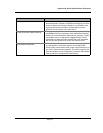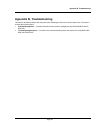
DXS/DWS 3200 Series User Guide
Page 326
DXS-3227, DXS-3227P, and DXS-3250 Features
This appendix describes the device features. The system supports the following features:
Feature Description
Auto Negotiation
Auto negotiation allows an device to advertise modes of opera-
tion. The auto negotiation function provides the means to
exchange information between two devices that share a point-to-
point link segment, and to automatically configure both devices to
take maximum advantage of their transmission capabilities.
Auto negotiation provides port advertisement. Port advertisement
allows the system administrator to configure the port speeds
advertised.
Automatic MAC Addresses Aging
MAC addresses from which no traffic is received for a given
period are aged out. This prevents the Bridging Table from over-
flowing.
Back Pressure
On half-duplex links, the receiving port prevents buffer overflows
by occupying the link so that it is unavailable for additional traffic.
Class Of Service
The IEEE 802.1p signaling technique is an OSI Layer 2 standard
for marking and prioritizing network traffic at the data link/MAC
sub-layer. 802.1p traffic is classified and sent to the destination.
No bandwidth reservations or limits are established or enforced.
802.1p is a spin-off of the 802.1Q (VLANs) standard. 802.1p
establishes eight levels of priority, similar to the IP Precedence IP
Header bit-field.
Command Line Interface
Command Line Interface (CLI) syntax and semantics conform as
much as possible to common industry practice. Syslog
Syslog is a protocol that enables event notifications to be sent to
a set of remote servers, where they can be stored, examined and
acted upon. The system sends notifications of significant events
in real time, and keeps a record of these events for after-the-fact
usage.
Configuration File Management
The device configuration is stored in a configuration file. The Con-
figuration file includes both system wide and port specific device
configuration. The system can display configuration files in the
form of a collection of CLI commands, which are stored and
manipulated as text files.
DHCP Clients
Dynamic Host Client Protocol. DHCP enables additional setup
parameters to be received from a network server upon system
startup. DHCP service is an on-going process.



